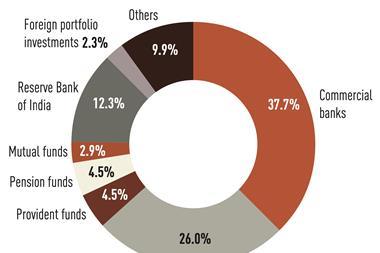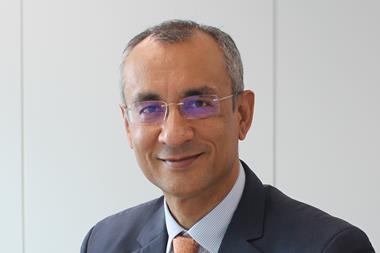The New Pension Scheme framework is a tremendous concept, but turning the concept into a successful solution to the problems of old age poverty in India is a task that requires a level of commitment, organisation and resources that are still yet to be deployed. The experience of the past is not hopeful. Previous attempts by the government of India to alleviate poverty have been very haphazard. The National Rural Employment Scheme for example, guarantees 100 days employment a year for rural workers at a rate of Rs100 a day. It effectively means that with or without work, rural workers can expect Rs10,000 a year paid to them. But whilst the scheme is expensive from the Government’s viewpoint, there is no record of who is getting the benefit and who is not, so whether the “leakage” of benefits is 10% or 50% is an unknown quantity.
In principle, the structure of the NPS and the development of technology such as the unique identification (UID) should enable any support from the government in terms of co-investments into pensions to be targeted at the most vulnerable segments of society. The NPS therefore does represent a new dawn for the alleviation of old age poverty in India. However, after six months of operation, the NPS itself had only recruited 3000 individual members, which would certainly not be seen as a success by any commercial operation, when the objective is to recruit tens if not a few hundred million participants!
Yet in its defence, the Chairman of the Pension Fund Regulatory and Development Authority (PFRDA) would argue that it is still early days and it will take time to get the infrastructure in place. What has been achieved since the 13 months or so (as of November 2009) since the creation of the PFRDA, has been the establishment of an infrastructure encompassing custodians, trustee banks, fund managers etc at a low cost without, they would argue, compromising on quality. As of November 2009, the NPS had 550,000 members from the central government civil service, and 100,000 from State governments. They are forecasting this figure from the States should rise to one million by 2010.
The PFRDA is not a statutory body as yet, and as a result, its powers are limited. Rules such as a 50% cap on investment in equities have been set by the central government and as a result, the PFRDA has no choice at the moment, but to accept them. Indian pension schemes currently have little exposure to equities with investments in the EPFO schemes predominantly bond based. Yet many pension funds in developed markets are looking to increase weightings to emerging markets above the 12% of the global equity market that they currently represent, on the grounds that they represent countries with younger populations and higher GDP growth rates. On this basis, India could find itself in 20 years time, with the situation that India’s companies are paying more dividends to support the aging populations of the developed nations, than they are paying out to support the pensions of their own ex-employees and India’s population more generally!
The PFRDA is tasked both with being a development agency for the introduction of the NPS as well as a regulatory authority. Yet until formal legislation is passed in Parliament, its role as a regulator is strictly limited, and it functions as an arm of the Ministry of Finance. Whilst it is in this position, it does however, carry much more clout in terms of persuading and pressurizing other arms of central government and indeed, State governments to move more quickly in realizing the aims of the NPS. Once legislation has been passed to formally incorporate the PFRDA as a separate legal entity, it will be seen as a narrow regulator, without the backing of a powerful ministry behind it.
The critical time for the eventual success of the NPS may actually be in the next year or so. During this time, the PFRDA and its supporters elsewhere need to build up the momentum and the enthusiasm of the States to actually implement the system they have already agreed in principle to accept; they need to find ways of incorporating existing micro-pension schemes within the NPS, and set up many more such group schemes; and much more progress needs to be made on the most difficult that of all, that of persuading individuals outside of any group, of the merits of saving for old age through the NPS.
Critics of the PFRDA’s progress in recruiting members give the experience of Delhi’s auto-rickshaw drivers as an example. The 85,000 auto-rickshaw drivers, steering their ubiquitous three-wheelers around India’s capital, have their own trade union. The union approached the PFRDA directly with a view to joining the NPS. But the NPS required a minimum contribution of Rs.6000 a year, whilst the union felt its members could only afford Rs200 a month based on their income. Instead, the union went to UTI who happily took on all 85000 members using the micro-pensions route. From UTI’s perspective, the auto-rickshaw union is totally responsible for the administrative burden of organizing the collection of small payments and pooling them together. As a result, UTI has only to manage the funds. It seems somewhat perverse that the PFRDA chose to turn the group away at a time when it needs to demonstrate the capabilities of the NPS.
If the “D” in PFRDA is to stand for something other than the word “Defensive”, the PFRDA needs to answer the issues raised by its critics and become much more proactive in developing the NPS, if the momentum is to be maintained. The experience and success of the micro-pensions in India, with over 200,000 members across India, in essentially a series of private initiatives shows the potential of what can be achieved. Can these initiatives be integrated, as they should be, into the NPS, which could and should act as a catalyst for the convergence of the efforts to alleviate old age poverty across India? Or will the turf battles between the many ministries in the Indian Government give rise to another impasse in development, as they have so many times before.
Already the NPS itself has split into the two main strands of the Civil Service scheme and the private sector scheme, with different sets of fund managers. This itself reduces some of the benefits of scale and will make it more difficult for transferring pensions between the public and private sectors. The alternative scenario for the NPS is clearly already appearing over the horizon in the disappointing progress made by the State Governments in fully implementing the NPS , despite their initial enthusiasm for the idea. The crucial challenge over the next 18 months will be to develop sufficient momentum for the NPS to really become entrenched, across both the public and private sectors. The jury is still out as to whether its proponents will succeed in this aim.






























No comments yet